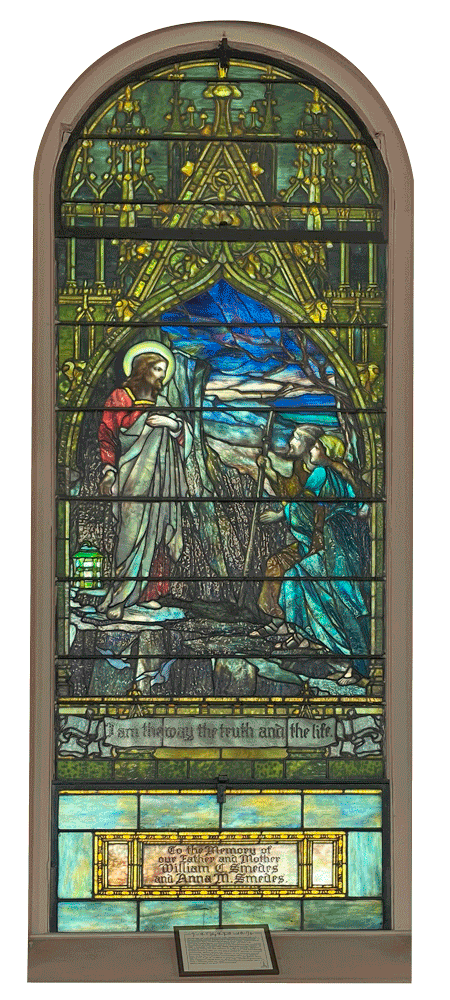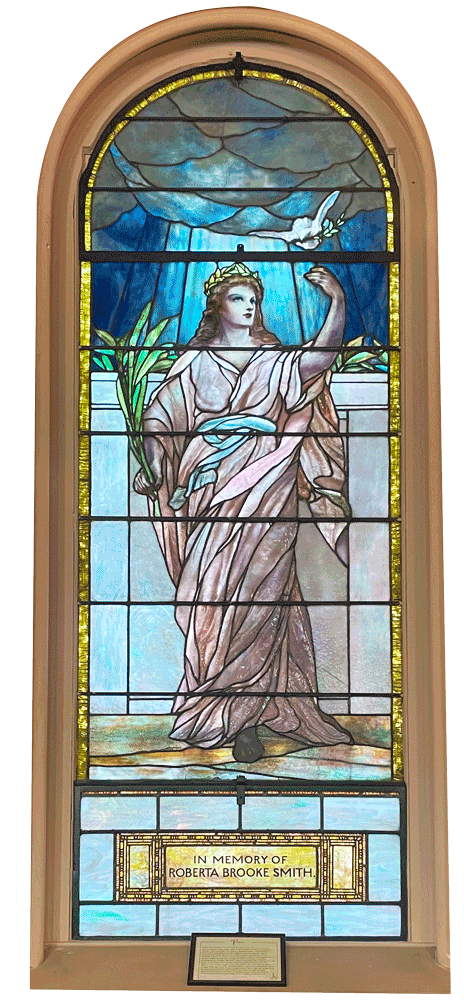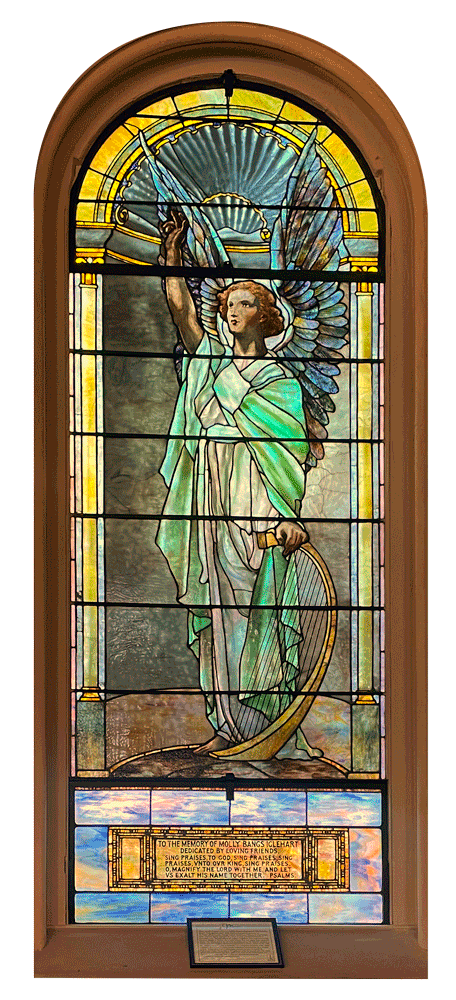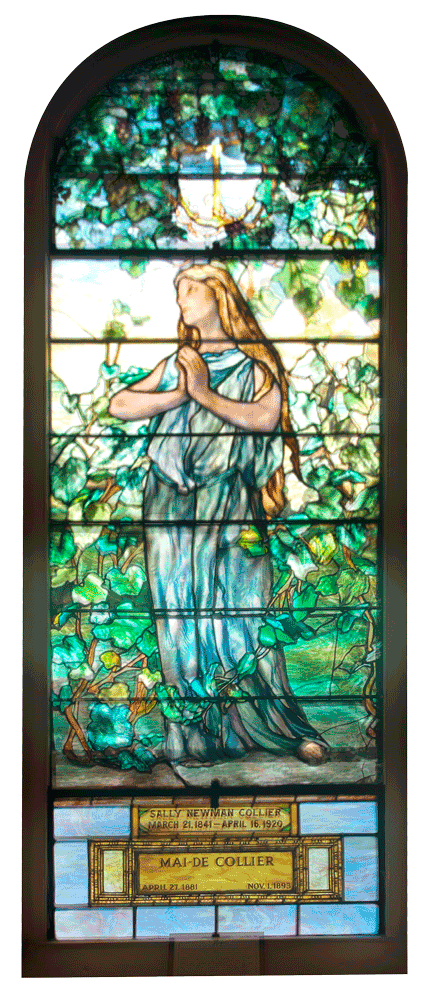Stained Glass works of Louis Comfort Tiffany
Learn more about our 6 Tiffany Stained Glass windows below
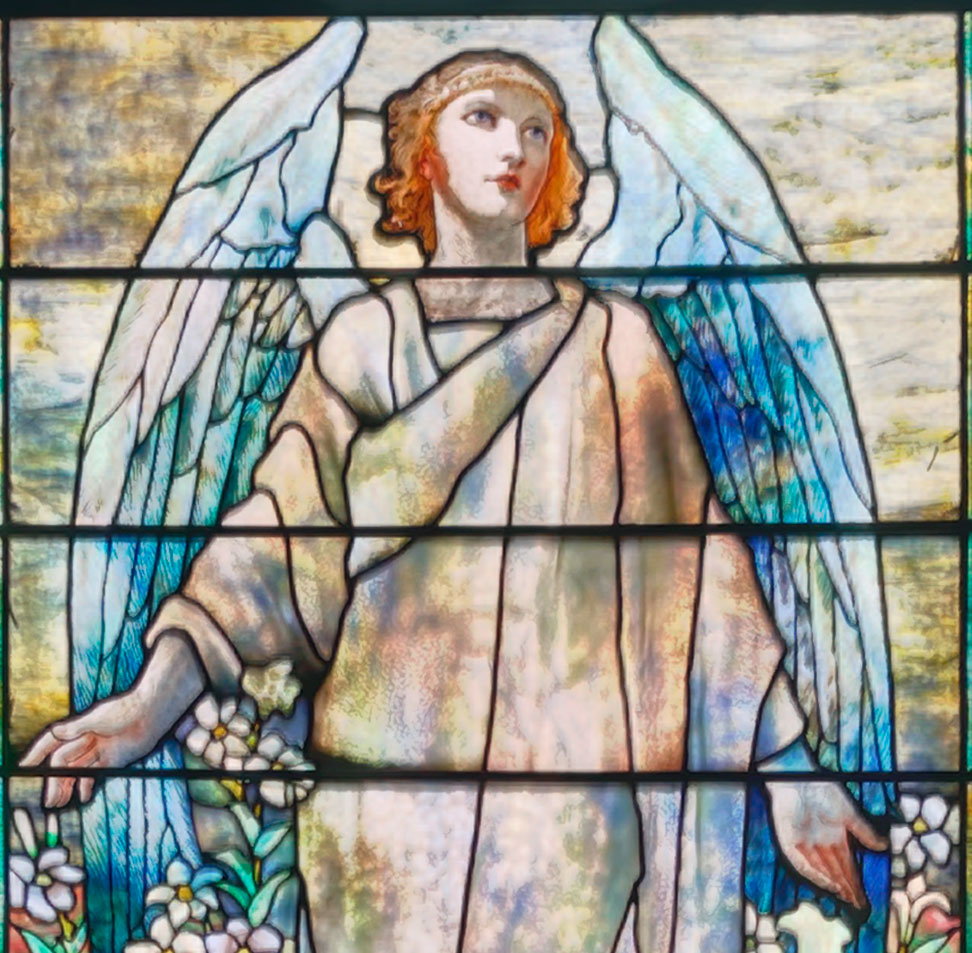
Angel and Field of Lilies
The third window from the right in the south wall of the nave was given in memory of Emma Bedford by her family. One of six tiffany windows in the church, it was in place by 1910 and is marked “Tiffany Studio, New York,” indicating design and execution between 1900 and 1915. It is entitled “Angel and Field of Lilies,” and the expression of the subject is one of purity and innocence. The figure is Gabriel, angel of the Annunciation, shown admist lilies which, as symbols of virginity, purity, and chastity, are associated with the Virgin Mary. This window appears in Tiffany’s 1910 partial list as the “Norton” memorial window, probably referring to the married name of one of the daughters who helped give the window. It is inscibed “Our Mother.”
click icon below to see full size
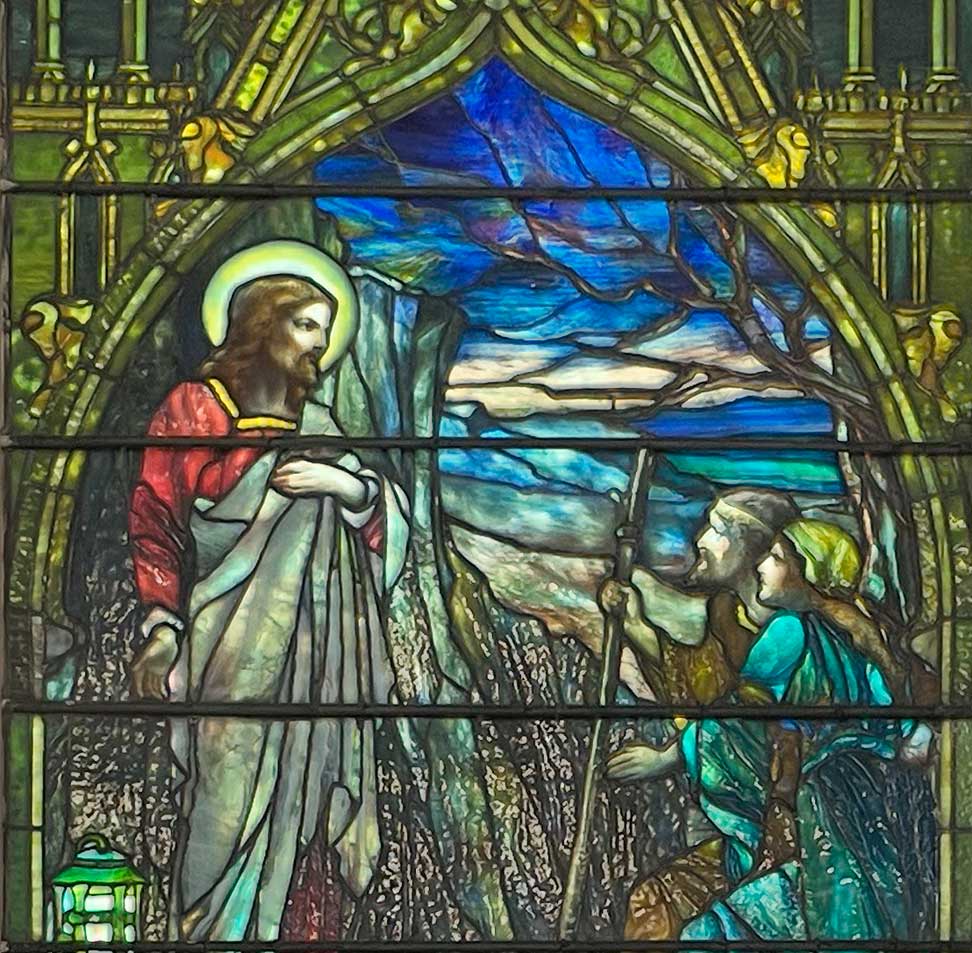
I am the Way, the Truth, and the Life
The center window in the north wall of the nave was given by the Smedes family in memory of William C. and Anna M. Smedes. One of six tiffany windows in the church, it was installed after June 1894 but was almost surely in place by 1900. It is marked “Copyright 1896, Tiffany Glass and Decorating Company,” an unusal (for tiffany) but nonetheless clear indication of the year of its design and execution. It is the most ornate of the Tiffany windows and in its portrayal of multiple figures is unique among the six. The scene is an interpretation of St. John’s account of the words of Christ spoken in the passover chamber. Jesus is shown standing on a dark, precipitous road and gesturing toward a lamp in revealing himself to two disciples. Two doves are shown in flight below him. The Scene is framed by an elaborate portal suggestive of an entrance to the house of “many mansions.”
click icon below to see full size
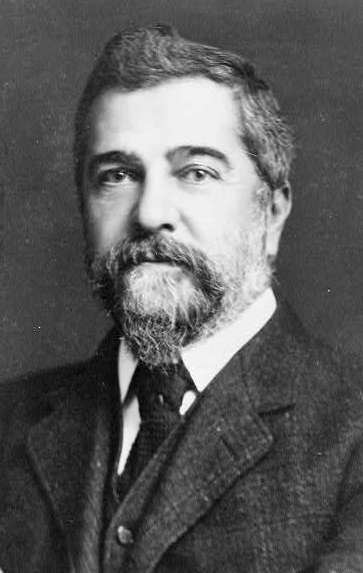
The Artistry of Louis Comfort Tiffany
Christ welcomes us all: “Come unto me all you whose burden is heavy.” The grace and beauty of this window are an inspiration to worshipers and visitors alike
Louis Tiffany, renowned for his mastery in glass craftsmanship and the offspring of Charles Tiffany, the founder of Tiffany & Co., is celebrated as a visionary, particularly for his unparalleled ability to capture the essence of light in his creations.
His artistic flair extended to the incorporation of texture, showcasing yet another facet of Tiffany’s multifaceted talent. Over the course of his illustrious career, Tiffany catered to a distinguished clientele that included notable figures such as Mark Twain and President Chester Arthur.
The culmination of Tiffany’s brilliance can be witnessed in the completion of the church in 1880. The stained glass windows, a testament to his artistry, were financed primarily by generous donations from Civil War veterans across the nation and were subsequently added to Holy Trinity in the ensuing years.
What adds a distinctive touch to these windows is their role as among the earliest post-Civil War memorials dedicated to both the Union and Confederacy, underscoring their historical significance. It’s worth noting that not all the stained glass windows are Tiffany originals, but of the 14 adorning the chapel’s sides, six bear the unmistakable mark of Tiffany’s genius.
While six may initially seem modest, the rarity of Tiffany originals is highlighted by the fact that, in the entirety of Mississippi, there are estimated to be only 11, elevating the significance of this number to an impressive degree.

Peace
The third window from the right in the north wall of the nave was given in memory of Roberta Brooke Smith by her husband, William H. Smith. One of six Tiffany windows in the church, it was installed after June 1894 but was probably in place by 1900. In Tiffany’s partial list published in 1910, this window is entitled “Peace,” a theme emphasized by the dove bearing an olive branch and alighting on the uplifted hand of the graceful figure. The figure is crowned with laurel and robed in a flowing pink gown. In her right hand, she carried a shaft of palms, marking her as representative of the rejoicing multitude at the triumphal entry of Jesus to Jerusalem: “Blessed be the King that cometh in the name of the Lord: peace in heaven, and glory in the highest.”
click icon below to see full size

Music
The rightmost window in the north wall of the nave was given in memory of Molly Bangs Iglehart by “loving friends” of the parish. One of six Tiffany windows in the church, it was installed after June 1894 and was likely in place by 1900. It is entitled “Music,” which from the attitude of the angelic figure would seem to understate the joyous event being observed. The outspread wings, uplifted arm, and look of tribute suggest the heralding of Easter morn, which is an interpretation of the scene of longstanding in the parish. The harp resting at the angel’s side is an attribute of David and symbolizes all music which glorifies God.
The face of the angel bears a striking resemblance to that of the figure in the Smith window. this and the similarity of the other details in these two windows would indicate their design and execution close to time, perhaps by the same artist employing the same model. the Tiffany partial list of 1910 identifies this as the “Martin”, memorial window, probably a reference to the individual placing the order.
click icon below to see full size
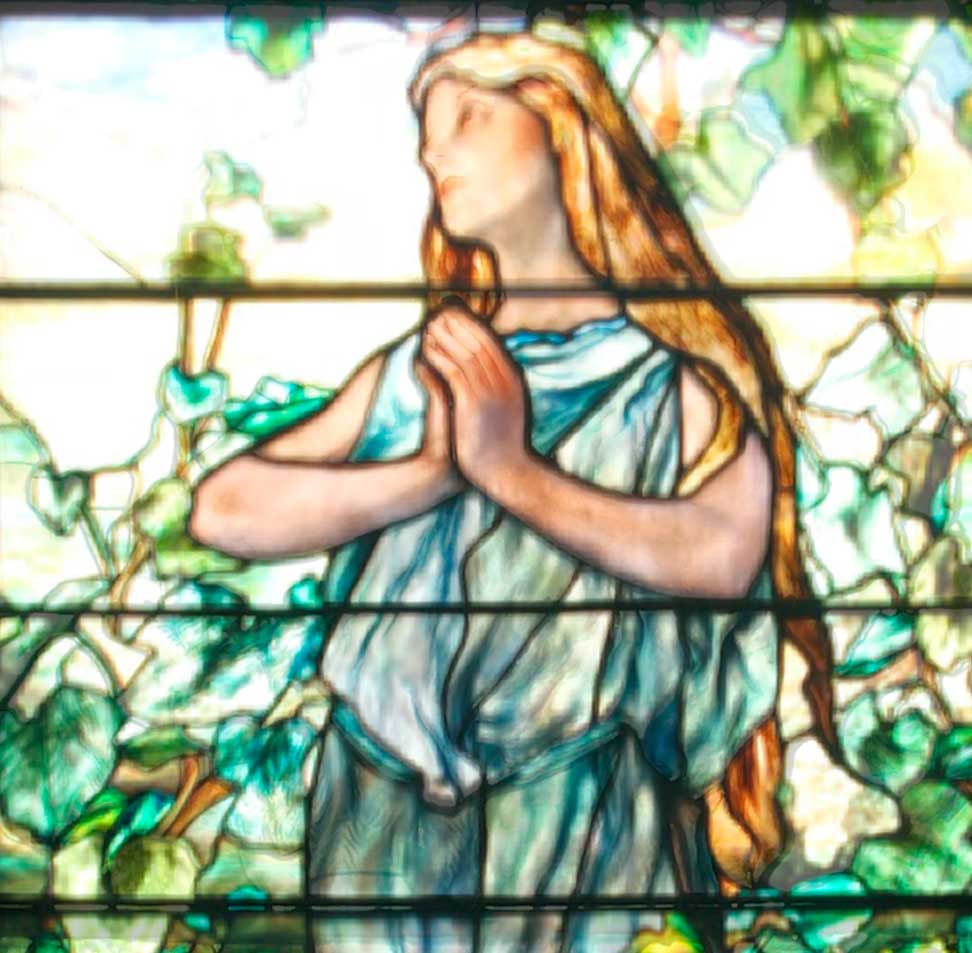
Hope
Hope seems a plea when viewed as a memorial prompted by unexpected loss of a beloved daughter, Mary De Chesney Collier (1881 – 1893), then her husband, John Marshall Collier (1836 – 1898), by Sarah A. Newman Collier (1841 – 1920). Her family added her name after she passed. John Collier, a banker, was a lieutenant in the 21st Mississippi and wounded at Gettysburg. Mai-De Collier’s death at age 12 agonized the parish and community. Sally Newman Collier, a native of Warren County and daughter of Dr. James Newman, was an organizer of the Daughters of the Confederacy and served as one of its presidents. She died at age 79 in Memphis, and her remains were brought to the Vicksburg homee of her son, Congressman James W. Collier, prior to services at Holy Trinity. Installed by 1910, third from the chancel in the south wall, the Tiffany window is unusual in displaying one of the studio’s bolder methods, layering of panels, in this case mostly in the upper area and unsuccessfully. The basic window underneath the deteriorating layer is sound, but the added upper panels slowly continue to detach and disintegrate.
click icon below to see full size
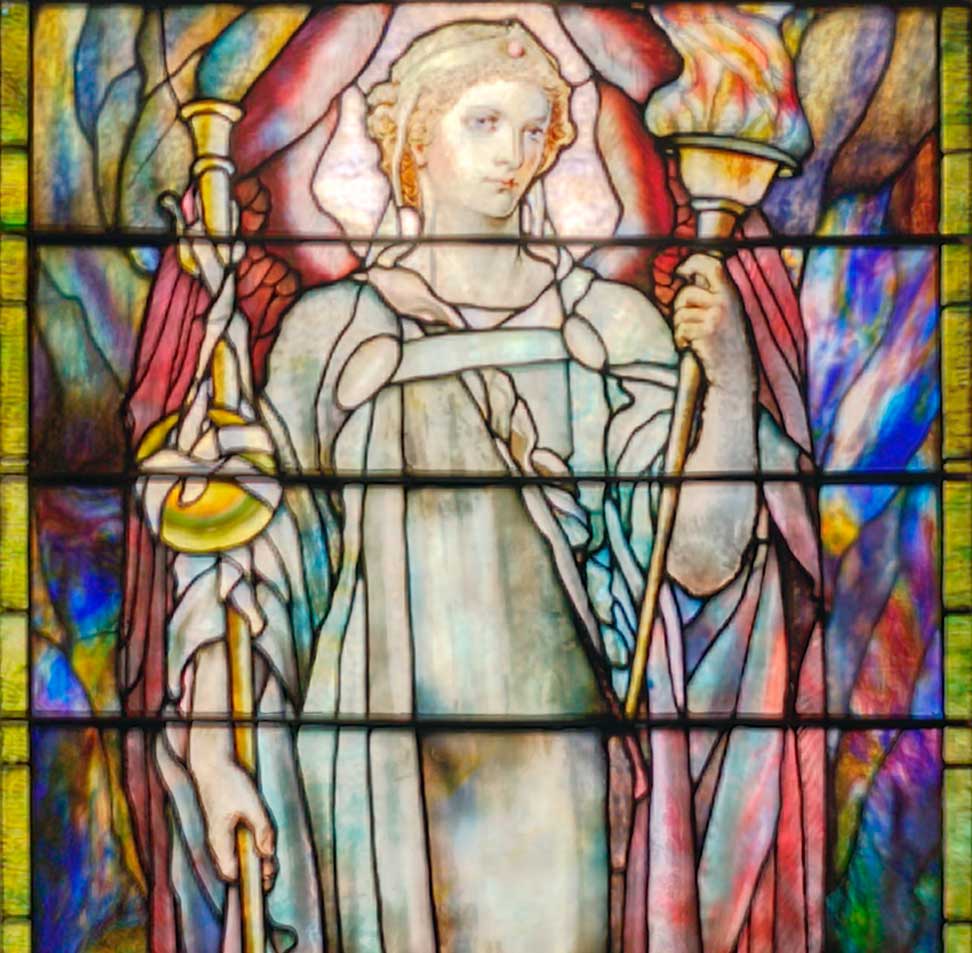
Archangel Raphael
The second window from the left in the south wall of the nave was given in memory of John Armistead Conway by his wife Mary Bell. One of six Tiffany windows in the church, it was installed after 1900 but was definitely in place by 1910. It is marked “Tiffany Studio, New York,” indicating design and execution between 1900 and 1915. The figure is the Archangel Raphael, in Christian tradition the angel who brought news of Jesus’ birth to the shepherds. The torch in his left hand is a symbol of the Nativity of Christ, the Light of the World. The spear in his right hand is inverted for use as a pilgrim’s staff, representing his role in aiding Tobias in the Apocryphal book Tobit. The figure balances calmly on the wheel of time, behind which rise flames useful in his task of healing the earth from the defilement of the sins of the fallen angels.
click icon below to see full size
The stained glass program at Holy Trinity
Along with the 6 Tiffany windows in Holy Trinity Church, there are 8 other “reconcilation” windows along the sides of the church and three memorial windows in the apse. These are done in the traditional stained glass method. Below are some examples of this work.

